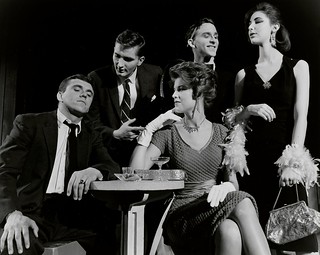CEO’s and their C-Suite teams are mired in quantitative data analysis. Trying to make sense out of dollars and cents. Uncertainty reigns on how to shape future company strategic direction. Frustration exists with research consisting of surveys and data analytics only providing a snapshot of customer and market realities. Recent customer profiling efforts only telling senior executives what they already know.
Sound familiar?
Given the amount of technological changes impacting buyer behaviors in the past decade, this is the likely state of affairs in many B2B corporate environments.
Frustration
Many executives today in marketing, sales, strategy, and operations are frustrated with the lack of fruitful research and insights. Seeking to outline their company’s future strategic direction, they are finding themselves continuing to be not as informed as they believe they should be. Lacking in the type of insights, which results in new strategies connected to a changed world.
In my recent conversations helping executives discuss this dilemma, there is a sense of detachment from market and customer realities. What they are typically provided with for strategic planning are:
Segmentation Data
Purchasing History
Lead and Opportunity Analytics
Website Analytics
CRM Profiling Data
Survey Results
While all of the above provide important information relative to how an organization is performing, they offer little help with the dilemma of detachment and understanding customers. What they all have in common is they are rooted in quantitative analysis. With the ever-increasing complexities of B2B businesses, these forms of research and data can amount to a giant jigsaw puzzle. Causing confusion. Adding to this dilemma are ill-fated attempts at buyer profiling masked as buyer personas. Leading to disappointments in attaining much needed rich insights.
Understanding The Buyer’s World
Speaking as a former head of marketing as well as sales, it takes tremendous effort to fight detachment. The constant pull of internal meetings and the business of operating a department is a very real challenge to overcome. Leaving little time to experience the world of customers and prospects at the level needed. Yet, executives today need to engage in the world of buyers and customers more than ever in order to set the strategic direction of their companies on the right course. How can they do this?
One such way is through insights-based as well as ethnographic-based buyer stories. Buyer stories can engage executives in the world of customers and buyers, which can be hard to come by. Offering rich insights into the challenging situations facing businesses and buyers. Such insights can prove to be vital for deciding future strategic direction and strategies.
Insight Into Behavior And Experience
The essence of buyer stories is the ability to convey to executives the behaviors and experiences of buyers. These behaviors and experiences can be difficult to understand through quantitative data and analytics alone. For example, in buyer insights research and buyer persona development work done for HP in the healthcare market, it was uncovered health system IT Directors develop an emotional as well as experiential attachment to hospital care and Hippocratic oath values. This ethnographic-based insight, amongst several others, contributed to a restructuring of the strategic approach towards health systems.
What executives need today are the story of their buyers and the situations they face. Buyer stories also challenges as well as validates assumptions organizations and executives can hold about markets and customers. As in the case of HP, what proved to be pivotal were stories related to how healthcare information technology was changing the face of health systems and affecting behaviors, not data center footprint as an example.
Obtaining Rich Insightful Buyer Stories
Acquiring rich insights into buyer stories does require a shifting of resources towards deeper understanding of buyers based on the following:
Attain immersive understanding of buyers. Companies today will need to seek understanding through immersive understanding of their customer’s situations and environments. Meaning they must be observable.
Make use of qualitative research expertise. It complex markets, using qualitative expertise in ethnographic research principles will be required to understand and distill stories. For example, Intel makes regular use of external and internal ethnographers to understand both consumer and business technology challenges.
Focus on behaviors, attitudes, and experiences. Good stories usually evoke emotions in us. The same applies here. Solid use of qualitative and ethnographic expertise can capture the emotions and values buyers experience and serve as the plot for helping organizations and executives build empathy with buyers.
Use buyer personas to help tell stories. One of the primary purposes of buyer personas is to help tell the story of buyers. Providing the rich characterization and insights needed to do so. They serve as the medium to tell a good story – a story serving as an archetypal representation of real world realities. Allowing executives and the organization to engage in the visualization to make buyer stories three-dimensional.
Changing Strategies
One of the challenges for B2B organizations today is how to recast strategies to meet changing market dynamics underway. Confronting the need to transform while still growing annually. Delivering rich buyer insights will require commitment to researching and crafting buyer stories. Moving well beyond traditional, and in some cases, out-dated buyer profiling towards immersive understanding of buyers.
Organizations and the C-Suite need to engage in the world of buyers and customers. Overcoming detachment. Buyer stories comprised of rich details about the emotional values and experiences of buyers will help develop much needed executive and organizational empathetic understanding and to recast strategies.
And, in the end, the organization may come to understand itself like it has never been able to before.




